Iconic
Forgotten
Timeless
Innovative
These are the soundtracks that help shape and define what we hear in the video games that we play. I am Nitro, and this is the M Disk Playlist Video Game Music Primer, 2003.
***

Final Fantasy Tactics Advance, composed by Hitoshi Sakimoto, Kaori Ohkoshi, Ayako Saso, and Nobuo Uematsu
The Game Boy Advance provided an opportunity to present games in a way that could not be possible on any other portable device at the time. It was especially possible now for a portable device to make a game that almost matched a successful PlayStation One title. It was one of the first Final Fantasy titles released on a Nintendo system since Final Fantasy VI back in 1994, and it was one of the first Final Fantasy titles since the announcement of Squaresoft and Enix's merger. It was released outside of Japan as a Square Enix title. But in Japan, the game was released before the merger was officially complete. But nonetheless, Final Fantasy Tactics Advance represented a revival of the franchise's glory days on a Nintendo system.
The game was developed by key members of the Final Fantasy Tactics staff, as well as members of Quest Corporation. Quest Corporation was known for the Ogre series, including Tactics Ogre, the spiritual precursor to the Final Fantasy Tactics series. In 2002, Quest was acquired by Square, reuniting their at-the-time current members with the members who had initially left to join Square. Unlike Final Fantasy Tactics, four composers were brought in for this game, with the primary composer being Hitoshi Sakimoto. Sakimoto was a primary composer for Quest, before joining Square to make a name for himself with Final Fantasy Tactics, as well as Vagrant Story. After Vagrant Story, he became a freelance composer to form the musis production group Basiscape. His co-composer from the first Final Fantasy Tactics, Masaharu Iwata, would not join Sakamoto for this game. Ayako Saso was a composer who initially did not want to be a composer. Instead, she prefered to be an electone organ player. She liked playing in bands, but did not like actually composing scores. Yet, her interest in video games made her discover her inate talents as a composer. She got her start at Namco working on titles like Ridge Racer and Galaxian 3. In 1997, she left Namco to work on the Street Fighter EX series. Through that game, she became known for her light hearted, energetic scores. It was during this time that she would composer her first score for Square, Bushido Blade. Saso joined collaborator from Namco Shinji Hosoe in his music production group, Super Sweep Records.
Kaori Ohkoshi, the youngest of the four composers, got her start in the video game industry at the age of 21, also joining Hosoe's Super Sweep Records. She got her foot in the door submitting to a contest held by Enterbrain, most famous for their RPG Maker creation tools. She didn't win, but she won 10,000 yen as a consolation prize. This game would be her first professional score. And Nobuo Uematsu, a name almost synonymous with the Final Fantasy franchise, composed only the main theme for the game. He was the sole composer of the first nine main entry Final Fantasy titles. He would contribute to the scores of Final Fantasy's 10 and 11, but his involvement in the series declined at the turn of the century. This would be the first, and only Final Fantasy spin-off Uematsu worked on, excluding the Final Fantasy Legends games, which were actually part of the SaGa series, not the Final Fantasy series.
It took a collaboration of freelancers, newcomers, and those familiar with the Tactics games to bring this game to life. It was a different approach to the world of Ivalace than what we got in the first Tactics, and Vagrant Story. It was unique, and slightly more accessable to the portable gamer. And it would serve as something that would help Nintendo show exactly how much more potential the Game Boy Advance had than the other portable systems that were in the market at the time.
***

Mega Man Zero 2, composed by Ippo Yamada, Masaki Suzuki, Luna Umegaki, and Tsutomu Kurihara
Just as the Mega Man X series was a continuation of the original Mega Man series, the Mega Man Zero series was a continuation of the Mega Man X series. The original Mega Man Zero, released in 2002, was originally composed by sound designer Ippo Yamada, where he would serve as that game's only composer. Some of the pieces from the first Zero are arranged in Zero II as "second" versions of the pieces. For Endless Fight, Crash, Neo Arcadia, and Result of Mission became recurring themes for the Zero series.
In Zero 2, he would be joined by three composers whose first experience with a Capcom game was this one. In the case of Masaki Suzuki, this would be the first game he EVER worked on. He was responsible for the the main stage themes, as well as the penultimate final boss theme, Supreme Ruler. He would continue to work on the Zero series, as well as the ZX series. Luna Umegaki and Tsutomu Kurihara had some game experience prior to joining the development team behind the Zero series, Inti Creates. They collaborated together under the name Lu7 (pronounced Lu Tsu) They both contributed to the later Zero games, and the ZX games as well. Umegaki's contributions include the Resistance base themes, the final levels, as well as THE final battle theme. Kurihara's only contribution to the game was the piece, Sand Triangle, which was co-composed by Yamada.
Mega Man Zero was the next evolution in the traditional Mega Man franchise. While games from the Legends series and Battle Network series changed the foundation of Mega Man, Mega Man Zero stuck with its roots, for better or worse. For Mega Man Zero 2, the sequel was enhanced not just by the first composer, but from composers who started to build their composer resumes. Either with Capcom, or for the first time ever. Zero 2 was an effortless collaboration between experience, and newcomer.
***

Castlevania: Aria of Sorrow, composed by Michiru Yamane, Soshiro Hokkai, and Takashi Yoshida
When the Game Boy Advance was released, it was the Castlevania games released for the system that overwhelmed the target audience. The combination of the addictive gameplay, with visuals unmatched by any other portable game at the time, allowed Castlevania to set a standard for the Game Boy Advance that few other developers were able to achieve. It started with the launch title, Circle of the Moon. Despite its success, series producer Koji Igarashi did not like it, and considered it an unofficial entry to the canon Castlevania timeline.
Then came two games that were developed back to back; Harmony of Dissonance, and Aria of Sorrow. While Harmony of Dissonance excelled in the graphics department, and capturing the same feeling of playing Symphony of the Night, the soundtrack was critically panned. Some even calling it "the worst in the series." The blame laid on sacrificing audio quality for video quality. For Aria of Sorrow, the decision was made to reserve more memory for audio, while simultaniously matching the visuals that helped make Harmony of Dissonance a memorable entry in both the Castlevania, and the Game Boy Advance line-up.
The other significant differences between Harmony of Dissonance, and Aria of Sorrow was the futuristic setting of the game, and main protagonist Soma's ability to absorb attacks and techniques of nearly every single enemy, boss or otherwise, to assist him. This unique gameplay element was called the Tactical Soul system. The dedication to all the visuals, the unqie gameplay, and the role playing elements inspired by Symphony of the Night helped arguably make Aria of Sorrow the most successful of the three Castlevania titles released on the Game Boy Advance.
Michiru Yamane is almost synonymous with the Castlevania franchise, due to her involvement with the Symphony of the Night score. However, she actually began her involvement with the Castlevania franchise with the 1994 Genesis Castlevania game, Bloodlines. Yamane's influence on the game goes beyond simply scoring it. Igarashi sought Yamane's knowledge of musical terminology to come up with the name of this game. In Japan, this game was released as Akatsuki no Minuet. He chose Minuet because, according to an interview with Nintendo Dream magazine translated by shmuplations, minuet matched the story themes better, as it symbolizes the people who surround Soma and give him support, just like dancers accompanying each other in a minuet.
Soshiro Hokkai serves as the sound director for this game. In addition to contributing to the score itself, he also designed the sound effects. His previous experience with Castlevania was Harmony of Dissonance. He was motiviated by the poor response to the sound of Dissonance to make the sound effects more varied, and the score more high quality without compromising the graphics or the audio on a Game Boy Advance game.
Takashi Yoshida has been in the video game industry since 1993 with the PC-Engine game, Magicoal. He has had many different industry roles throughout the years, with his most recent work being the audio designer of Warriors Orochi 4, and Dissidia: Final Fantasy NT. His first game as a composer was this game, working on some of the battle themes, including both of the final battle themes for Chaos.
Aria of Sorrow could arguably be considered the definitive portable Castlevania release on the Game Boy Advance. The first one, Circle of the Moon, excelled in audio. The second, Harmony of Dissonance, excelled in the graphics. Aria of Sorrow manages to find a perfect balance between the two, while simultaneously providing innovative gameplay elements to a Castlevania game, which was already built on the success of Symphony of the Night.
***
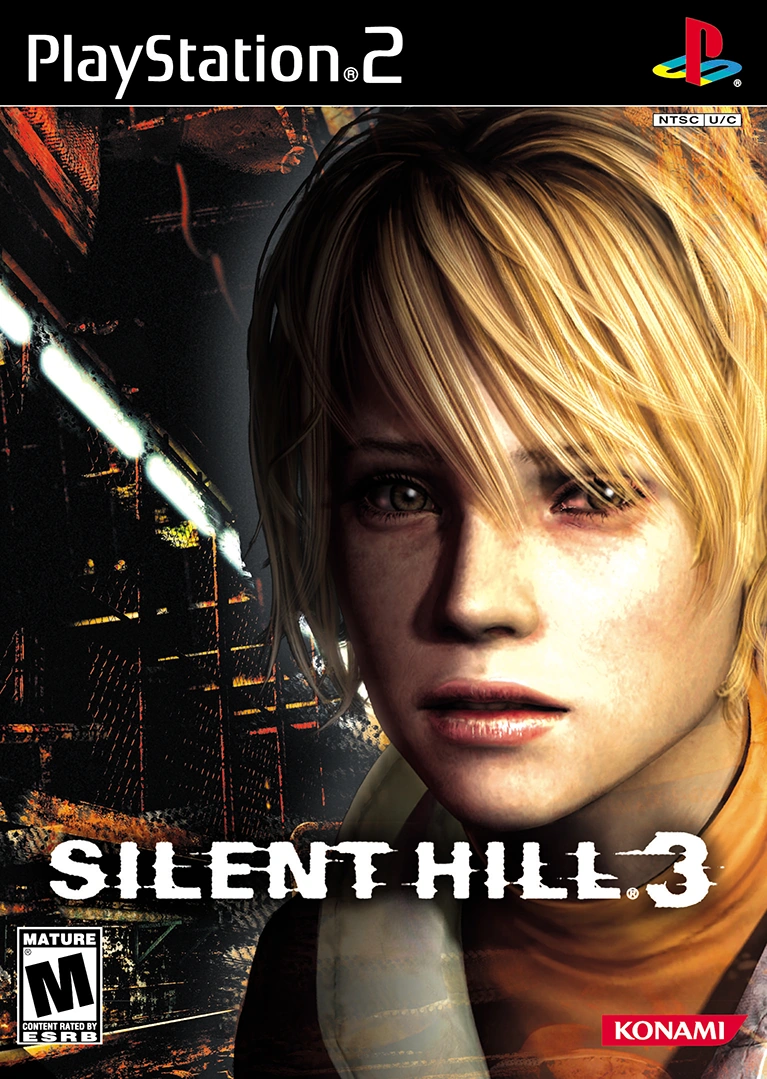
Silent Hill 3, composed by Akira Yamaoka
Akira Yamaoka's eerie, disturbing, and haunting scores for the previous two Silent Hill games helped make the series stand out in the survival horror genre. There was nothing that sounded like what Yamaoka was capable of producing. His skills, and knowledge of exactly how to make Silent Hill a terrifying experience enabled him the opportunity to produce the third game in the series, on top of being the composer. Unlike Silent Hill 2, which told a fresh story set in the same location, Silent Hill 3 is a direct continuation of the story told in the first game.
Silent Hill 1 was influenced by industrial music. Silent Hill 2 incorporated etheral melodies to the industrial influence. For this game, Silent Hill 3 incorporates light rock music. And this was what Yamaoka intended, as he wanted to give Silent Hill players evolved experiences with the sound, as opposed to being complacent with the formula. Vocal music was brought back to the seires with this game. Joe Romersa performs the ending theme, Hometown, a lyrical arrangement of the original Silent Hill theme. Mandolin and everything. The choice to make the ending theme an arrangement of the original opening of the first game helps bring the story that is connected by Silent Hill's 1 and 3 come to complete circle. Romersa was a drummer for the Narc Tanner Band. In the 90s, he started work in the anime industry as an ADR, writer, director, and voice actor. He also wrote all the vocal pieces in this game. Hometown also serves as an ending theme for Silent Hill: The Arcade. The other vocalist, one who would become Yamaoka's most frequent vocal collaborator starting with this game, Mary Elizabeth McGlynn.
McGlynn performs three of the game's vocal pieces. You're Not Here, Letter, and I Want Love. Before joining the Silent Hill series, McGlynn was primarily known for her work in the anime industry with roles like Julia in Cowboy Bebop, Queen Diva in El-Hazard, and Urd in the Ah! My Goddess movie, just to name a few. Nowadays, you can hear her influence in the animation industry as director of Netflix's She-Ra and Carmen Sandiego, and Disney shows like Tangled The Series, Star Wars Resistance, and Penn Zero: Part-Time Hero. McGlynn would collaborate with Yamaoka and Romersa for the Silent Hill series until Yamaoka's last Silent Hill game, Shattered Memories in 2009.
Silent Hill is a town that lived and breathed disturbing creatures, and unexplained horror. Akira Yamaoka continued to create and evolve the experience of Silent Hill by evolving his style of music that had been ingrained in the series since 1999. And with the talents of Joe Romersa and Mary Elizabeth McGlynn by his side, the music of Silent Hill, going forward, would become a medly of light rock, etheral, and terrifying sounds that would sound both pleasant, and shocking to listeners of the Silent Hill soundtracks, and players of the Silent Hill games.
***

Star Wars: Knights of the Old Republic, composed by Jeremy Soule
Star Wars; one of the biggest movie franchises of all time. LucasArts knew this, and was willing to take chances with video games based on Star Wars, and not just tie-ins to the movie trilogies. They used the Expanded Universe, now known as the Legends timeline, to help make games set in the Star Wars universe, but not during any of the movies. For Knights of the Old Republic, LucasArts gave developer BioWare a choice. Make a game based on Episode II: Attack of the Clones, or make the story take place 4,000 years before Episode 1: The Phantom Menace. The prequel story was chosen by BioWare. BioWare already had experience with their Dungeons and Dragons inspired role playing game, Bauldur's Gate. They were ready to develop the same kind of role playing game set in the Star Wars universe, while LucasArts handled the audio end of development.
Jeremy Soule, who ironically was inspired by LucasArts and the works of Ron Gilbert, was chosen to score the game. The intent was to match the mood of the Star Wars film scores by John Williams, whose pieces were sampled in parts of the entire score. Other than the familiar Williams pieces, the score as a whole is original material from Soule. Soule wasn't able to compose a fully orchestrated score for this game, unlike some of his previous works. To compose the score for this game, while expecting to stay true to the mood of the original Williams score, with the technical difficulties, Soule used a MIDI system that was capable of producing 8 megabits of audio per second. He wasn't able to run an entire orchestra set, but he was able to write and compose music for the individual orchestra instruments.
Knights of the Old Republic was widely regarded as not just one of the best Star Wars video games, but one of the best overall games of 2003. And thanks to the game being released on the Xbox, console gamers who weren't PC gamers were introduced to BioWare's role playing games. The score may not be as high quality as some of Soule's previous soundtracks, but the score still managed to successfully pay homage to Star Wars, and how it was enhanced by the music of John Williams.
***
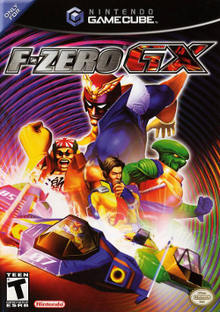
F-Zero GX, composed by Hidenori Shoji, and Daiki Kasho
If there was one game that combined Nintendo, Sega, and Sony, the three dominant video game console creators from the 90s, it's F-Zero GX. F-Zero was Nintendo's flagship racing game that doesn't involve karts, co-produced by Shigeru Miyamoto, designer of the F-Zero series, on top of Nintendo's other flagship franchises like Mario and Zelda. The other producer was Toshihiro Nagoshi, who helped produce and direct Sega racing games like Virtua Racing, Datona USA, and Scud Race. He would also go on to create Sega's popular Yakuza series for the PlayStation family of systems.
Daiki Kasho is the primary composer of the Gran Turismo series, PlayStation's biggest racing franchise to date. He was responsible for composing the character themes of the game, featuring vocalists Alan Brey, ch, Tetsu, ono37, and Nick Moroishi. Some of these vocalists also worked with Kasho on the Gran Turismo series. The rest of the score was primarily handled by Hidenori Shoji. Shoji was a Sega composer who started his career as one of the composers of Sega Touring Car Championship. His first game as a primary composer was for the game Fighting Vipers 2. He would go on to compose for the games SpikeOut, and Super Monkey Ball's one and two. He, like Nagoshi, would be part of the Yakuza franchise as one of their composers. Shoji had always been a fan of the original F-Zero game, to the point where one of his favorite pieces from the entire Super Nintendo library was the music that would play in the results screens of the original F-Zero.
It was the first game devloped by both Nintendo and Sega together since Sega became a third party developer. What's forgotten in this piece of history is how Sony ties into this game, through its composers. No other game at the time combined the talents of those who helped enhance the Nintendo, Sega, and Sony catalog of games respectivly. The music in the F-Zero series was always fast paced, exciting, and on occasion, intense. With composers who enhanced Sega and Sony's best racers respectivly, F-Zero's was given newer, unique approaches to how the game should sound, while simultaniously evolving what made the music of the F-Zero series memorable in the first place.
***
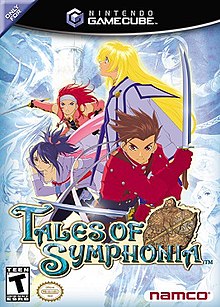
Tales of Symphonia, composed by Shinji Tamura, Motoi Sakuraba, and Takeshi Arai
The very first Tales game, Tales of Phantasia, far surprassed the limitations of the Super Nintendo. With its graphics, audio which included voice clips, and an actual vocal track, Tales of Phantasia was clocked in at being a 48-megabit cartridge. The game was concieved by members of the development group, Wolf Team. Wolf Team was a division of Telenet Japan, who were initially known for their work on the Valis series. A key member of Wolf Team were composers Motoi Sakuraba, and Shinki Tamura, who composed nearly every Tales game.
Sakuraba throughout his school year became famous for his skills as a keyboardist. He started his professional music career as a member of progressive rock group, Clashed Ice, with vocalist and drummer Genta Kudo. After signing with Made in Japan Records, vocalist Tetsuya Nagatsuma joined the group and was renamed Deja Vu. Deja Vu had a successful run in the 80s as a group that combined the Baroque style of music with a more modern sound. The group later added two members of another well known group, Outer Limits. Tomoki Ueno, and Ken Ishita. Deja Vu broke up in 1989 due to creative differences. Sakuraba released a solo album under Made in Japan Records before joining Wolf Team, and by proxy, Telenet Japan as a composer.
He solidified himself as a prominant composer with scores for the games Akushu and Arcus II: Silent Symphony. He continued to make hit after hit until eventually becoming a freelance composer. As a freelancer, he continued to compose for Wolf Team, while simultaniously contributing to scores of games made by tri-Ace, consisting of members who were frustrated by Telenet Japan's business practices. Sakuraba's involvement with tri-Ace further increased his fame, due to the music he scored for the Star Ocean series. Shinji Tamura's public profile isn't currently as cohesive as his co-collaborator Sakuraba's is. But he built his resume in the game industry alongside Sakuraba, working on the Tales games. He currently goes by the name Hibiki Aoyama, and composed for the Tales of games until the 2013 PlayStation Vita port of Tales of Hearts. He now works primarily in the anime industry, as a writer annd composer. Some of his credited works include DearS, Hime-sama Goyojin, Mai otome zwei, and the Starmyu series.
By the time Tales of Symphonia was released, publisher Namco had bought out Telenet Japan, and restructured Wolf Team as Namco Tales Studio. This gave the team, and Sakuraba the opportunity to score for Nintendo games once again. And Tales of Symphonia was intented to be one of Nintendo's biggest third party releases for the Gamecube.
Takeshi Arai's public profile is even less cohesive than Tamura's. Search results for Arai's name often get mixed up with a photographer of the same name. According to IMDB, the top result for the composer, he has been involved with the game industry since working as part of the production crew of the 1997 Grandstream Saga. He works mostly in sound design for Namco. But according to VGMDB, he served as an arranger for Tales of Symphonia, arranging some of the music that appeared in the previous games in the series. But overall, Arai's responsibility was with the sound programming, and sound effects.
Performing the main theme for the game was Jpop group, Day After Tomorrow with the song Starry Heavens. The style of music from Day After Tomorrow is similar to that of the group Every Little Thing. This wasn't coincidence, as former member of Every Little Thing, Mitsuru Igarashi, serves as the producer of Day After Tomorrow.
Tales of Symphonia had a lot of history behind it. It was built off a revolutionary concept from the Super Nintendo, with music from composers who grew up with either the series, or the people who helped the series get released in the first place. And from people who refined and defined their music style before even joining the video game industry. And it was Tales of Symphonia that helped the Tales series reach a bigger audience outside of Japan, allowing the Tales series to become almost as big of a role playing game franchise in the west as Final Fantasy and Dragon Quest.
***
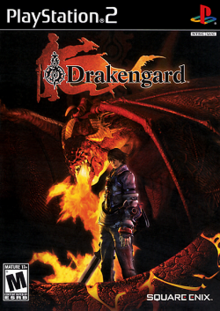
Drakengard, composed Nobuyoshi Sano and Takayuki Aihara
Drakengard was an unorthodox mash-up of musou games like Dynasty Warriors, ariel combat games like Ace Combat, with more inspiration taken from movies like The Lord of the Rings, Dragon Heart and The Mummy, and even further inspiration from anime like Berserk, Neon Genesis Evangelion, and Sister Princes. All these inspirations were combined to create Drakengard. On the surface, it was a fantasy action adventure game. But for story writer Yoko Taro, going against what was considered "normal" wouldn't have given Drakengard the chance to stand out. Dark, disturbing, and extremely taboo themes became motifs and plot devices. To help enhance the dark nature of Drakengard, the music also had to be dark.
Both Aihara and Sano were prominant composers of the Tekken series. While Sano was more known for the Tekken series, Aihara (while still a contributor to Tekken), would be known for his works with developer Akira. Both composers would come together to compose music that, like the story, didn't aim to sound vaguely similar to what was already out there. While there were some pieces that were grand and exciting, there were some pieces that fit intentionally fit the mood of madness, and despair. Part of what made the soundtrack stand out was the composers ability to sample classic scores from composers from different eras of classical music. They took their compositions, and arranged them, as well as layered them in a way that would help enhance the game and the story, regardless of how insane both would get at times.
The one vocal theme in the game, Growing Wings, was composed by Sano, and performed by Eriko Hatsune, who voices the character Furiae in the game. Hatsune, at the time of Drakengard's development, was known primarily for her role as Kirie Goshima from the live acation adaptaion of Junji Ito's Uzumaki. Her experience with the horror genre unintentionally amplifies the already dark and unique soundtrack. The song was given an English adaptation, performed by Kay Jensen, alias for well known voice actress Kari Wahlgren, who also voiced Furiae in the English release of the game.
There are five different endings in Drakengard. The fifth ending depicts you in a final showdown against the Queen Beast. The battle itself was different from the rest of the game, being more similar to a music game where you had to press the button at the right time to match the beat of the music successfully, even if the music sounded creepy. This ending would also serve as the beginning of Yoko Taro's other series, Nier.
Drakengard was one of the most experimental soundtracks in video games at the time. The story and the music were more successful than the game itself. But the game did introduce the world to Yoko Taro's storytelling and direction. Something that he would be known for on a "cult classic" basis. But with each new release, his fame and the soundtracks associated with his games would grow. Then, with the release of NieR: Automata in 2017, both Taro and the soundtracks for his game would reach universal acclaim. And it all begain with this game.
***

Beyond Good and Evil, composed by Christophe Heral
It wasn't uncommon for composers in the video game industry to not be gamers themselves. Such is the case of French film composer Christophe Heral. In fact, being a composer wasn't his biggest aspiration as a child. He aspired to be a professional skier. But growing up with a family of musicians gave him the opportunity to take the study of usic more seriously, consuming the knowledge of classical composers as a teenager. Before video games, he was known more for film and television. His first credited score was for the French animated series Histoires de la maison bleue. He was even involved in producing the opening theme for the Lava shorts on Nikelodeon's KaBlam! His works on short films include Petir jeune fille dans Paris, Santa's Last Christmas, and Picore. And finally, his first film was the 2001 made for TV animated adaptation of Jules Verne's Journey to the Center of the Earth.
After accumilating experience in the film and television industry, he got his first video game score, Ubisoft's Beyond Good and Evil. As someone who never played video games, his approach to the score for this game was basically wanting to compose music he would want to hear. He wanted to ensure that no matter how long the game was, he didn't want anyone playing the game to be tired of listening to any of the music. He was recruited by game director Michael Ancel, whom the two worked together on the television show, The Pantin Pirouette. Heral was assisted by Laetitia Pansanel, and his Brother Patrice Heral. Foley sounds were used to help enhance parts of the score. For example, the piece Metal Gear DomZ uses samples of his neighbor's son playing with scrap metal. The vocals in some of the songs were provided by Heral himself, and his brother Patrice.
Beyond Good and Evil was a highly regarded original take on the adventure genre that was built on exploration just as much as the action. Memorable for its cast of characters, and memorable for its music, from a composer who at the time had no experience with video games. His next video game score would not come until roughly eight years later, with another score that would make him just as widely regarded as this game did, Rayman Origins.
***
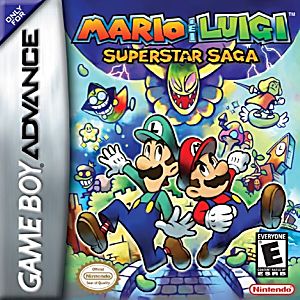
Mario & Luigi: Superstar Saga, composed by Yoko Shimomura
It was very evident to Nintendo that the Mario franchise and the role playing game genre compliment each other very well. Super Mario RPG prooved this, as did Paper Mario for the Nintendo 64. With the release of the Game Boy Advance came the opportunity to bring a third version of the Mario role playing game experience to a portable device. Not only that, but to recruit Yoko Shimomura, composer of Super Mario RPG, to score this new role playing game.
What separated Mario & Luigi from the other role playing games was how it required you to control both Mario & Luigi at the same time, and to have them work together to solve puzzles, and to defeat enemies. No other allies were recruited. It was just Mario, and Luigi against the evil Cacketta, and her popular assistant, Fawful. This game was the first one Shimomura composed since leaving Square to become a freelance composer. Shimomura studied music all her life, while being a gamer herself. She got her first composition jobs working for Capcom, which includes Street Fighter II. After leaving Capcom for Square to puruse the opportunity to compose for her favorite genre, role playing games, she made a name for herself with games like Super Mario RPG, and Kingdom Hearts. Mario & Luigi allowed her the opportunity to work with Nintendo again, after Square shifted it's support almost exclusively on the PlayStation.
Like Super Mario RPG, some of the pieces in the soundtrack are arrangements of Koji Kondo's works in the Mario games he composed. Like Peach's Castle, which is an arrangement of the castle theme from Super Mario 64. And of course, it wouldn't be a Mario game without the original athletic theme from Super Mario Bros arranged at least once.
Even though Shimomura was a freelancer, she has composed for every Mario & Luigi game that has since been released. She is just as comitted to this series as she currently is with the Kingdom Hearts series. It was a very fun score for a very fun game that is built on its quirky humor, its gameplay, the fact that it put Luigi in the main protagonist spotlight, and for Yoko Shimomura's return to Nintendo, and to the Mario series, making a score that was just as fun as her score for Super Mario RPG.
***
SOURCES
BG&E Myth
Eurogamer
FANDOM
Gamasutra
Gamefaqs
IGN
IMDB
MobyGames
Rocket Baby
Shmuplations
Siliconera
Square Enix Music
VGMDB
Video Game Music Online
Video Game Music Preservation Foundation

No comments:
Post a Comment